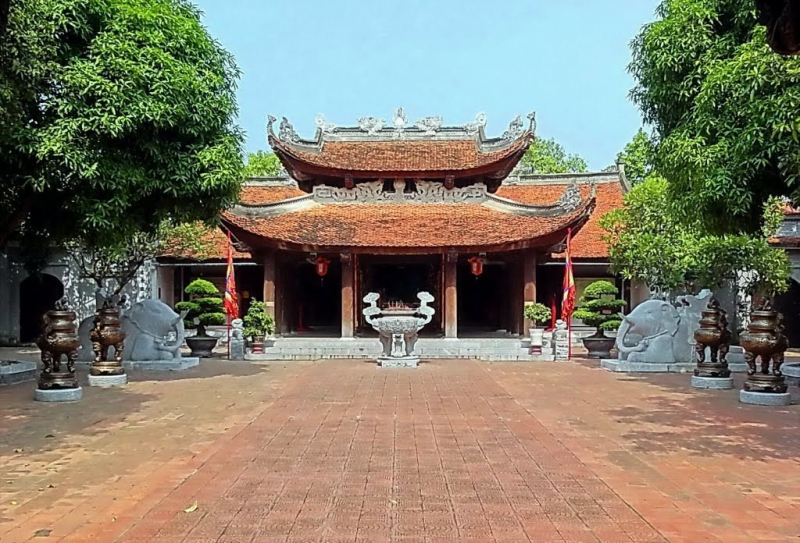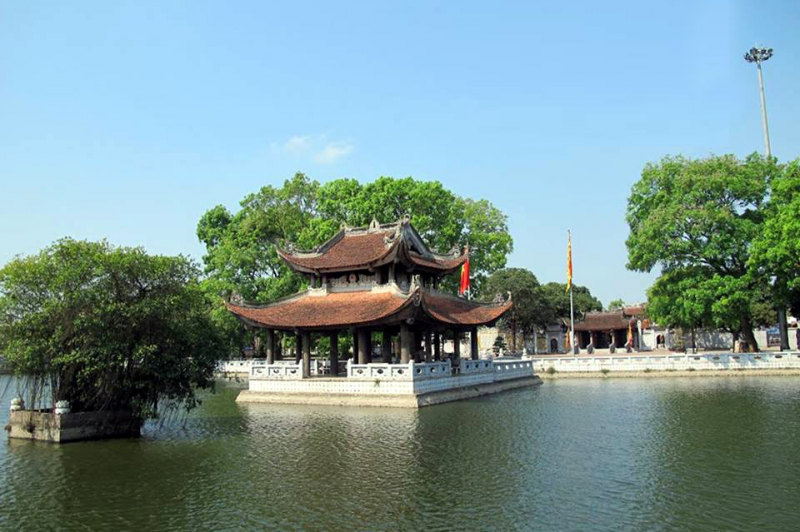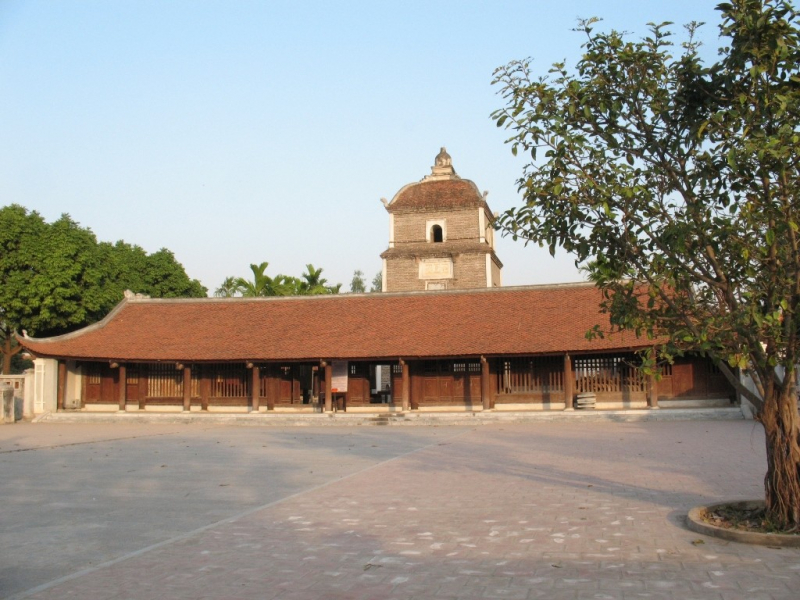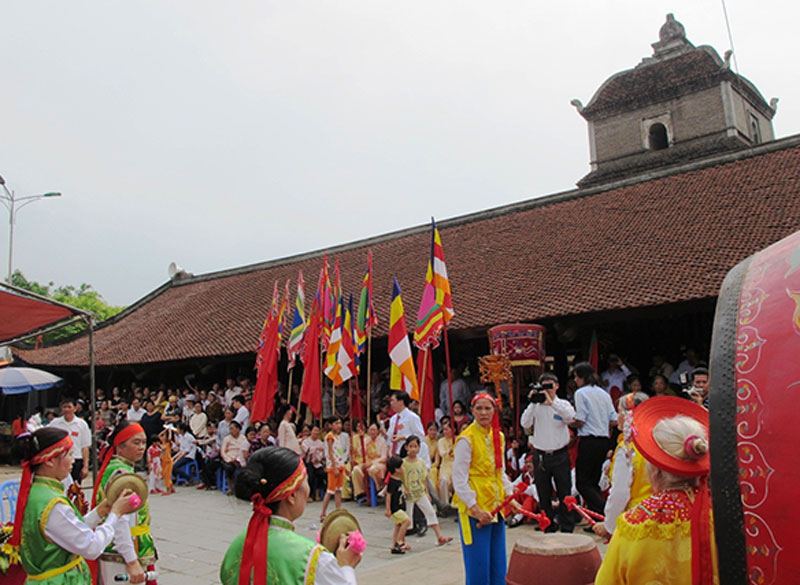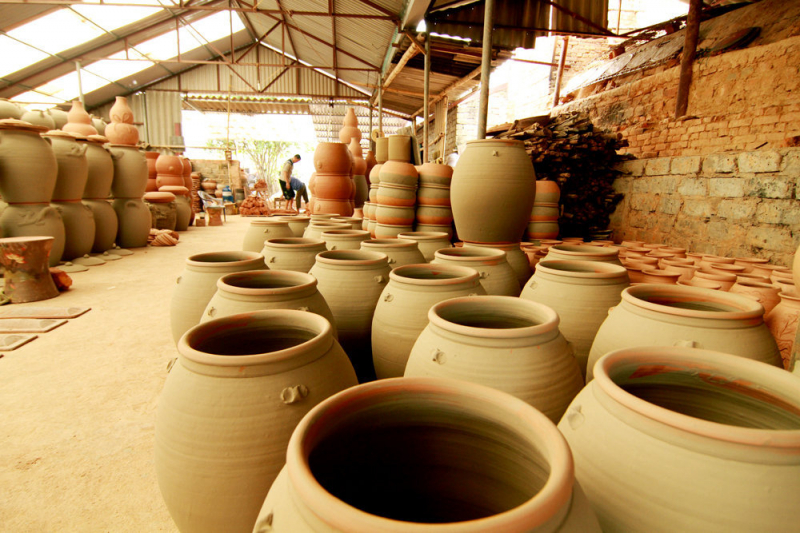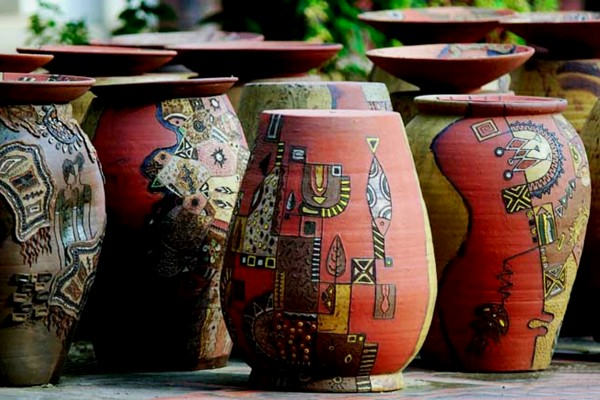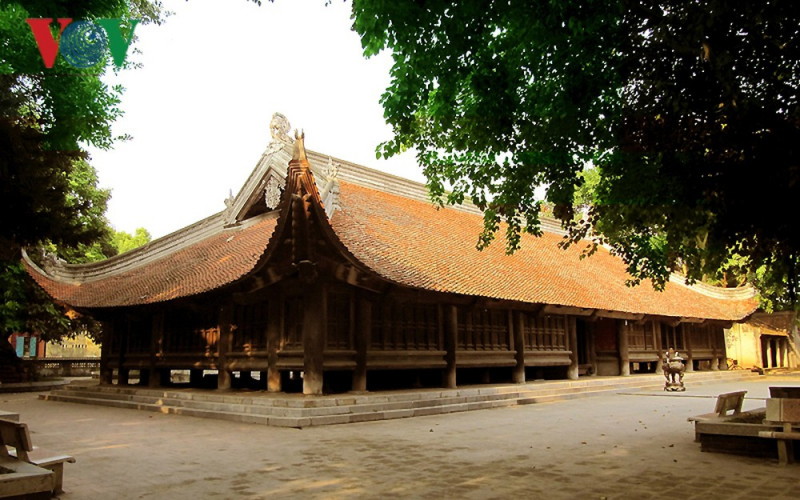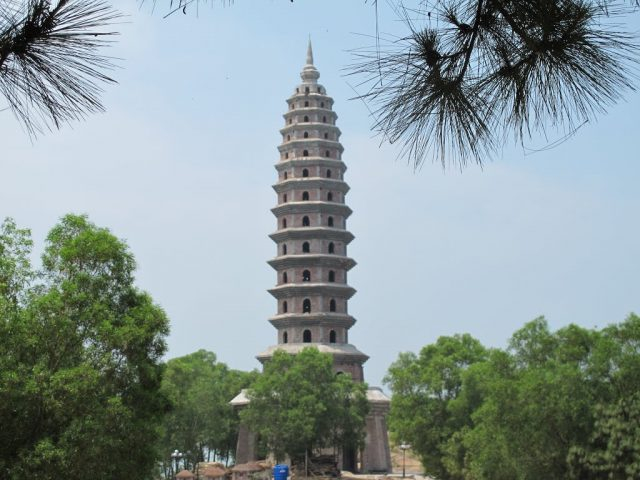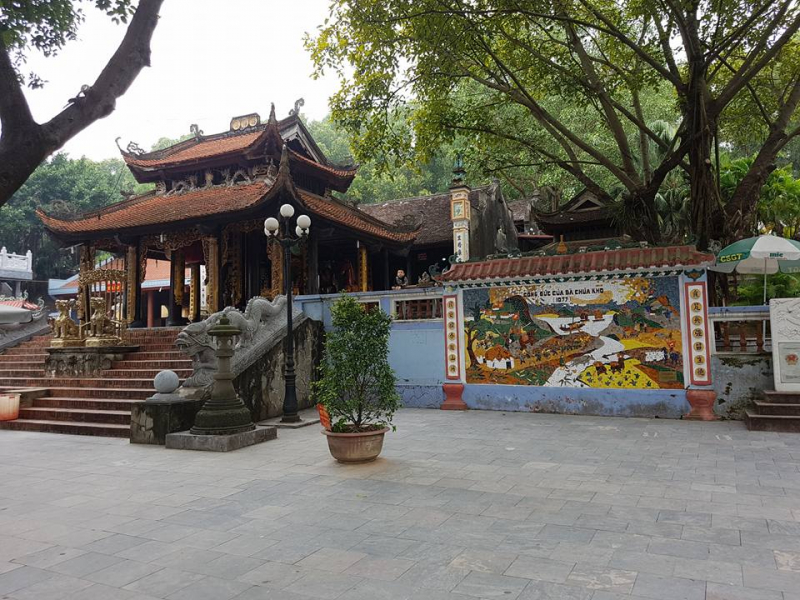Famous temples in Tay Ninh must come once
Besides the beautiful landscapes, Tay Ninh also attracts tourists with spiritual tourist sites. In which,
Bac Ninh is a land with many beautiful features of traditional cultural capital, in which the typical lyrical Quan ho tune goes into people’s hearts. Not only that, but Bac Ninh also attracts domestic and foreign tourists through its scenic spots, historical sites, and long-standing traditional craft villages. As the center of ancient Kinh Bac, Bac Ninh holds its own unique beauty in natural scenery as well as long-standing culture. If you have the opportunity to come to Bac Ninh, do not forget to visit the 6 most beautiful and famous tourist destinations here that Vinlove is trying to mention. And now let’s discover which places they are!
If you have the opportunity to once set foot in the land of Bac Ninh, you cannot ignore the famous tourist destination here: Do Temple . Do Temple , also known as Ly Bat De Temple or Co Phap Palace, is the place to worship the first 8 kings of the Ly Dynasty with a thousand-year history. Do Temple – the temple of the emperors of the Ly dynasty exudes the dignified, ancient, bold Thang Long aura. Coming to Do Temple , visitors will have the opportunity to admire the ancient architecture still preserved to this day with unique cultural features from architecture, meaning to festivals taking place here.
Do Temple was built on March 3, Canh Ngo year 1030 by King Ly Thai Tong. Later, the temple underwent many times of restoration and expansion. However, during the war, the French army bombed, completely destroying this sacred structure. Later in 1989, Do Temple was built and restored according to the old shape and architecture based on the research of experts as well as the remaining vestiges. However, Do Temple still retains its own ancient and quiet features, showing the majesty and majesty of the Ly dynasty.
Considered as the place of inheritance of the Ly emperors, Do Temple worships 8 kings as follows:
Temple Do is located on a campus of more than 31,000m². The architecture here is meticulously cared for with sophisticated carvings as well as the majesty and sacredness in the main hall and other worship areas. Stepping into the main hall of the Do Temple , you will see one side depicting King Ly Thai To’s “Chief Relocation”, the other side is the poem “Nam Quoc Son Ha” which is considered as the first Declaration of Independence of the country. ta. The incense smoke in the main hall adds to the quiet, ancient and sacred look of Do Temple .
Around Do Temple is a large campus, planted with many trees as well as clean stone walkways. Here, there is Crescent Lake, which is the place where Bac Ninh Quan Ho often takes place – the unique culture of this land. At the same time, Do Temple is also the place where many special festivals take place. If you come here on the full moon of March, you will have the opportunity to attend the traditional festival of the people to commemorate the merits of the Ly kings in the defense and development of the country.
If you have a chance to visit this culturally rich land, don’t forget to visit Do Temple !
Referring to Bac Ninh, we cannot fail to mention the famous spiritual tourist destination, which is Dau Pagoda . Also known as Dien Ung Pagoda, Phap Van Pagoda, or Co Chau Pagoda as well as many other names that people here often use, Dau Pagoda is considered the first temple built in Vietnam as well as the most famous pagoda in Vietnam. The oldest Buddhist center is still preserved to this day. It is said that this temple was built in the year BC by Indian monks. Then the temple was brought here by monks in China and established the first Zen sect in Vietnam. Over the years, Dau Pagodarepaired many times. During the war, this ancient and sacred temple was more or less destroyed and today it is reconstructed based on the ancient old architecture.
Dau Pagoda is famous and sacred not only because it is the first Buddhist temple in Vietnam but also associated with many legends such as the legend of Mac Dinh Chi, the legend of Man Nuong. Coming to Dau Pagoda, visitors will experience the ancient and sacred space here. The architecture of the Dau pagoda was built in the style of “foreign domestic and foreign affairs”. Which, four rows of connected rectangular houses surround the three main houses: front street, burning incense, and upper hall. At Dau Pagoda, there are worshiping Bodhisattvas, Tam The, Duc Ong, Saint Tang, … and many other statues.
Visiting Dau Pagoda on the occasion of the festival, you will experience the ancient rituals here. The festival at Dau Pagoda is also considered one of the oldest festivals in Vietnam still preserved to this day. The festival is held on the 8th day of the fourth lunar month every year. Therefore, if you have the opportunity, you should visit Dau Pagoda during this time to see firsthand the unique culture held here.
If you are a ceramic lover and want to learn about the art and craft of pottery, do not miss Phu Lang pottery village when coming to Bac Ninh. The pottery village is located in Que Vo district, 4km from Luc Dau River and right on the banks of the romantic Cau River. Coming here, you will not only be immersed in the charming landscape but also visit the production process of ceramic products such as cups, kettles, ornamental pots, earthen pots…
Phu Lang pottery village was formed and developed during the Tran Dynasty and is still preserved to this day. Some Phu Lang ceramic products in the 17th-19th centuries are still preserved and kept at the Vietnam History Museum. Visiting Phu Lang pottery village , visitors not only have the opportunity to learn about the pottery making process and traditional products here but also have the opportunity to learn more knowledge and experience about the thousands of years old craft village. this. Thereby, more understanding about the unique culture is expressed through each traditional handmade ceramic product.
In general, Phu Lang pottery focuses on three main types:
It can be seen that the products at Phu Lang pottery village are not only bold in culture but also have distinct nuances that cannot be confused with any pottery village in Vietnam. Another feature of ceramic products in Phu Lang is embossed in the form of marble carving, creating special and unique products.
But Thap Pagoda (also known as Ninh Phuc Pagoda ) is one of the places that attract many tourists to Bac Ninh. Recognized as a special national relic, But Thap pagoda has an ancient and contemplative beauty, especially with the largest wooden statue of Quan Am with thousand eyes and thousand hands in our country.
Located on the banks of Duong River, But Thap Pagoda has an ancient mossy appearance but is no less sacred. The pagoda is shaped like a pen lying in the middle of the sky, next to the vast and immense fields. Here you are free to walk in the large, spacious and quiet campus. But Thap Pagoda will forever be an ideal stop for those who want to find their spiritual roots. About the history of formation, up to now, there are no accurate sources recorded. However, there is some information that the pagoda dates from the Tran Dynasty and has been expanded and restored many times.
As one of the oldest temples in Bac Ninh, But Thap Pagoda has a harmonious combination of architecture and space, creating its own beauty, attracting many visitors. The main pagoda has three rows of houses: Tien Duong – Thien Huong – Thuong Dien forming the word “public”, inside worshiping Quan Am Buddha image as well as many other worshiping statues. Especially, there is Bao Nghiem tower with the architecture like a giant pen reaching up to the sky. The stone slabs are all carved in a meticulous and sophisticated way.
If you want to learn about the spiritual culture in Bac Ninh as well as the remaining ancient architectures, don’t forget to visit this famous But Thap temple !
The next name in the list of the most beautiful and famous tourist attractions in Bac Ninh is Dinh Bang village . This communal house was built at the end of the 18th century to worship the village emperors. The unique architecture here consists of the main hall and the walls on both sides gradually increase to create a meeting space for the people in the village. Here you can admire nearly 500 reliefs of dragon and phoenix in a peaceful and majestic space. Referring to the communal house of Dinh Bang village , the ancients have a saying:
“The first is Dong Khang communal house,
Second in Bang communal house, third in Diem communal house”
Coming to Dinh Bang communal house , you will experience a unique architectural space with a massive roof space, spreading out with many unique sculptural architectures. At the same time, the interior of the communal house is decorated with many different shapes such as dragons, phoenixes, swords, conifers, bamboos, etc. This is also the unique feature that makes Dinh Bang communal house attract many tourists to visit. Explore and learn about unique and unique cultures.
Dinh Bang communal house was classified as a National Relic in 1961 and has been preserved and preserved to this day. Coming to this tourist destination, you can not only experience the peaceful and airy space but also learn more unique cultural knowledge of your nation.
It would be a mistake not to mention the Dong Ho painting village of Bac Ninh – one of the tourist destinations that attracts many domestic and foreign tourists to visit the painting process, to see the masterpieces created by long-standing artisans. composed. Dong Ho village is located right next to Duong river, famous for its painting village with a long-standing unique culture. Dong Ho painting was also nominated by UNESCO to be recognized as an Intangible Heritage. Through each picture, it shows the culture in the daily life of the people.
Previously, Dong Ho paintings were mainly sold on the Tet holidays. Nowadays, Dong Ho paintings are more and more popular and preserved because of the cultural value that these works bring. What makes Dong Ho paintings different is the printing paper and the colors in each picture. The special type of paper of Dong Ho paintings is Phalaenopsis paper, which is used to paint pictures of life with diverse colors, harmoniously combined with each other to create a very unique overall.
If you visit Bac Ninh, do not forget to visit Dong Ho painting village to have the opportunity to admire the unique works here. From there, they understand more about the diverse and unique ethnic culture.
Phat Tich Pagoda (also known as Van Phuc Pagoda) is a temple located on the southern slopes of Phat Tich Mountain (also known as Lan Kha Mountain, Non-Tien), Phat Tich Commune, Tien Du District, Bac Ninh Province. In the temple, there is the largest stone Buddha statue of the Ly Dynasty in Vietnam. Phat Tich Pagoda is ranked as a Historical-Cultural Relic in Decision No. 313/VH-VP, dated April 28, 1962, of the Ministry of Culture and signed by the Prime Minister and ranked 62 Special National Monuments of Vietnam.
Phat Tich Pagoda is located in Phat Tich commune, where the meeting between Indian Buddhism and ancient Vietnamese folk beliefs took place. On that basis, the first Buddhist center of the country was formed (Strawberry – Luy Lau). According to ancient documents, the Phat Tich pagoda was built in the fourth year of Thai Binh (1057) with many horizontal and vertical buildings. In 1066, King Ly Thanh Tong ordered a tall tower to be built. After the tower fell, it was revealed in which the statue of Amitabha Buddha made of monolithic green stone was inlaid with gold. In recognition of the miraculous appearance of this statue, the village changed its name to Phat Tich and moved it up the mountainside.
The greenstone statue of Amitabha Buddha sitting on a lotus throne is 1.87 m high, a unique sculpture of the country’s fine arts in general and statue sculpture in particular. This is a unique highlight that everyone remembers when talking about Phat Tich Pagoda. At present, Phat Tich Pagoda has 7 front halls used to welcome guests, 5 compartments to worship Buddha, Amitabha and the three worlds, 8 pavilions of the Patriarchate house, and 7 rooms of the Mother Church. Phat Tich Pagoda in Bac Ninh has the architecture of the Ly Dynasty, shown through three canvas steps on the mountainside with a steep stone embankment like a 58m long wall, 3-5m high, in the middle of the wall is a stone walkway. 5m wide with 80 steps.
Phat Tich Pagoda Festival is usually held in three days, from the 3rd to the 5th of the Lunar New Year every year, in which the main day of the festival is the 4th. From the opening day of the festival (the 3rd day of the Lunar New Year), a large number of tourists have pulled together. Go to Phat Tich Pagoda to worship Buddha and pray for peace. Tens of thousands of people present here have made the entrances to the pagoda, bell tower, and the Great Buddha and Amitabha statue packed.
Ba Chua Kho Temple is located halfway up Kho mountain, in Co Me area, Vu Ninh ward, Bac Ninh city, Bac Ninh province. This is not only a valuable historical relic located in the relic complex of the Co Me area (including Communal House – Pagoda – Temple) but also an annual place where people across the country make religious pilgrimages.
The temple is related to the event that Ly Thuong Kiet led the resistance war against the Song army in 1076. At that time in Co Me village, Kho mountain, Cau Gao… were the places where the Ly army’s food warehouses were located. south bank of Nhu Nguyet front line (Song Cau). Kho Mountain, Dinh Mountain, and Thi Cau are also inherently strategic positions that can control the road from Lang Son across Cau River to ancient Thang Long. Co Me Temple worshiping Ba Chua Kho is the place to commemorate a Vietnamese woman. Nam skillfully organized production, stored food, and looked after the national treasure in the period before and after the Nhu Nguyet victory.
During the Ly dynasty, she helped the court take care of the food warehouse at Nui Kho (Bac Ninh province) and “fallen” in the resistance war against the Song army on January 12, Dinh Ty year (1077). mournfully anointed her as Phuc Than. People remember her and set up a temple at the old food warehouse of the court in Nui Kho and called her with a reverence: Mrs. Chua Kho.
Lim festival is a big festival of Bac Ninh province, the main festival is held on January 13 every year, in Tien Du district, Bac Ninh province. Lim festival is considered a unique crystallization of the Kinh Bac cultural region.
Lim festival is a unique cultural and artistic activity of the long-standing traditional culture in the North, and Quan Ho folk songs have become a common cultural property of the Vietnamese people, representing the lyrical folk song. North. Lim festival is the festival of the village of Lim and the banks of the Tieu Tuong River. Lim association became a general association (regional association) in the 18th century. When the governor of Thanh Hoa province Nguyen Dinh Dien was from Dinh Ca village, Noi Due, Kinh Bac country, had many merits with the court and was rewarded. many perks had donated many fields and gardens and money to the general Noi Due to restore temples, open festivals, preserve fine customs and traditions.
Above is a list of 9 beautiful and famous tourist destinations in Bac Ninh. Vinlove hopes the article will bring you a lot of interesting information as well as a reference for you if you have the opportunity to come to this culturally rich Bac Ninh land!
